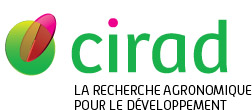Charbonnel Emeline, Benoit Laure, Nidelet Sabine, Ortega-Abboud Enrique, Gschloessl Bernhard, Leblois Raphaël, Ouvrard David, Chapuis Marie-Pierre. 2025. Optimization and Evaluation of the bestRAD Sequencing Approach: Towards Ascertainment of the Invasion Routes of the Oriental Fruit Fly, Bactrocera dorsalis. Molecular Ecology Resources:e14114, 15 p.
|
Version publiée
- Anglais
Sous licence  . .
PUB764.pdf Télécharger (3MB) | Prévisualisation |
Url - jeu de données - Entrepôt autre : https://doi.org/10.17504/protocols.io.rm7vz3ok4gx1/v1
Résumé : The bestRAD technique is a reduced genome representation approach with high-capacity sample multiplexing and physical isolation of biotin-labelled target DNA fragments using streptavidin beads, which should reduce total cost and genotyping errors. While we here formalise the relevance of this approach within the HTS landscape, our foremost aim was to improve its replicability, validity, and transparency. We first optimised the molecular laboratory protocol and shared the associated protocols (e.g., final detailed methodologies, quality control, best practices) under the FAIR principles. Using 84 worldwide individual samples of the Oriental fruit fly, Bactrocera dorsalis, a major invasive pest, we revealed a low rate of PCR duplicates, robustness to DNA quality and quantity, high genotype call rate, insignificant genotyping error rate, high nuclear and mitochondrial genome representativeness, and a high level of genetic information. This in-depth data quality assessment, along with total cost and handling time reduced by an estimated one-third relative to the parent RAD-Seq version, demonstrates that bestRAD is an excellent compromise between cost and quality. While we generated high-quality genomic resources for B. dorsalis, we also share details and recommendations for the bestRAD technique that can be readily used in any laboratory and applied to all organisms, even without published genome sequence.
Mots-clés Agrovoc : Bactrocera dorsalis, génotype, Tephritidae, génome, polymorphisme génétique, séquence d'adn, variation génétique, Bactrocera, génomique, adn, espèce envahissante, phylogénie
Mots-clés géographiques Agrovoc : La Réunion, Madagascar, Polynésie française
Mots-clés libres : Genotyping error rate, High-throughput sequencing, Invasion, Pest, Phylogeography, RAD-Seq
Agences de financement hors UE : Agence Nationale de la Recherche, Centre de Coopération Internationale en Recherche Agronomique pour le Développement, Centre Méditerranéen de l'Environnement et de la Biodiversité, Agence Nationale de Sécurité Sanitaire de l'Alimentation, de l'Environnement et du Travail
Projets sur financement : (FRA) Inférer la dispersion des ravageurs dans les paysages agricoles pour améliorer la gestion préventive, (FRA) BACTRACK, (FRA) PROLAG, (FRA) ISOGEO
Auteurs et affiliations
- Charbonnel Emeline, CIRAD-BIOS-UMR CBGP (FRA)
- Benoit Laure, CIRAD-BIOS-UMR CBGP (FRA)
- Nidelet Sabine, Université de Montpellier (FRA)
- Ortega-Abboud Enrique, Université de Montpellier (FRA)
- Gschloessl Bernhard, INRAE (FRA)
- Leblois Raphaël, INRAE (FRA)
- Ouvrard David, ANSES (FRA)
- Chapuis Marie-Pierre, CIRAD-BIOS-UMR CBGP (FRA) - auteur correspondant
Source : Cirad-Agritrop (https://agritrop.cirad.fr/612899/)
[ Page générée et mise en cache le 2025-09-30 ]




